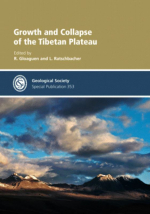Добрый день, Коллеги. Важное сообщение, просьба принять участие. Музей Ферсмана ищет помощь для реставрационных работ в помещении. Подробности по ссылке
Growth and collapse of the Tibetan plateau / Рост и разрушение Тибетского плато
The Pamir–Tibet–Himalaya orogenic system (Fig. 1) has been growing as a consequence of the collision between the Eurasian and the Indian plates since the Early Eocene (e.g. Hodges 2000). While the time of formation and the magnitude of shortening across the Tibetan Plateau are relatively well constrained, its origin and evolution are disputed, untested, or unknown (e.g. Yin & Harrison 2000). For example, it has been argued that Miocene to Recent geological, geodetic, palaeomagnetic, geomorphological, and geophysical features of the eastern Plateau are best explained by flow of low-viscosity material within the middle–lower crust (e.g. Clark & Royden 2000; Burchfiel et al. 2004). This model contrasts with the classic crustal imbrication–tectonic escape model that calls for thrust–fold belt style thickening and large-scale displacement of lithospheric blocks toward SE Asia. Both models have fundamental implications for crustal rheology, vertical coupling in the lithosphere, and Plateau formation and growth. <...>




